January 2011
January 2011, Investigating High Dynamic Range photography
I’ve always been a perfectionist and found HDR contrived, however due to high demand in this field – especially for interior shots that show exterior views – High Dynamic Range is an excellent tool for combining low interior light levels with intense exterior light (especially here in Andalucia). It was simply impossible to achieve such a contrast on film without endless banks of lights and unattractive shadows. So just to let you know, I’m on the HDR case. So just to let you know, I’m on the HDR case. Sunset shots can also come into their own with HDR photography, I´ve commenced with Casares.
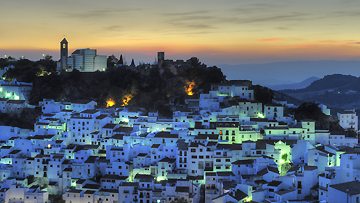
HDR image of the white village of Casares, captured at sunset
January 2011 Spanish Orange and lemon Harvest
The Andalusian countryside is alive in January and if you have ever had a fantasy of skipping through an orange or lemon grove, now is the time. If photographing citrus fruits is your aim, I would highly recommend a reflector, back lit angles work well.
January 2011, Snow in Andalucia, Spain
Yes, believe it not, it does snow in southern Spain! Ronda, just inland from the Costa del Sol, received a really good covering of snow this year. Which made venturing out to the region, and surrounding villages of the Sierra de las Nieves nature reserve, a must for capturing the snowy landscapes. The villages of Yunquera, El Burgo and Alozaina were all captured on camera. Snow can fool your camera sensor – don’t forget to allow for at least a third to a half extra stop for the added glare.

Snow on the Sierra de las nieves
January 2011, Parador Hotel, Ronda, Andalucia, Spain. Stock photography
Once a classic shot, always a classic shot
This is one of my favourite destinations to escape to. The Parador is perched high above the famous Ronda gorge, so staying there brings guaranteed spectacular views.
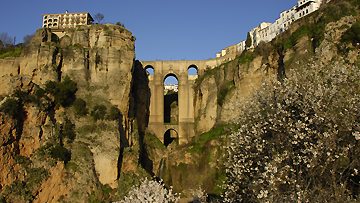
The magnificent Tajo of Ronda
January and February are the season for almond blossom, and it was a big thrill to capture the Ronda gorge with the almond trees in full bloom. To get the classic “Ronda” photograph – the gorge with the Tajo bridge – you have two options:
1. Hike down from the bridge into the canyon below
From the Parador, cross the bridge and turn right down Calle Tenorio, keeping to the right when the road divides; after a few minutes, you will notice the start of a cobbled path which drops steeply back towards the Tajo. Follow this down to ruins called “Arco del Cristo”. From here you have what is undoubtedly the best view of Puente Nuevo and the Tajo.
2. Climb up from the bottom
Leave Ronda heading south, and exit via the city walls on Calle Imágenes. Here you will find a roundabout; turn back on yourself onto Calle de Prado, and follow the road for 1 or 2km until you see the magnificent Ronda bridge to the right (lat 35.73895N, long 5.17042W). Park where you can and ascend the well-trodden goat track. It’s about a 20-minute climb with camera gear and a strong assistant giving a helping hand.
Photo tips:
The best time of day (ie when the bridge is in full sun) is in the afternoon.
A sturdy tripod is essential.
Take some water with you.
This photo venue is not for those who don’t have a head for heights!
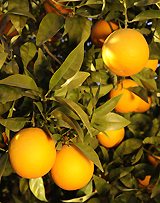
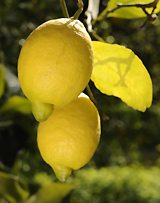
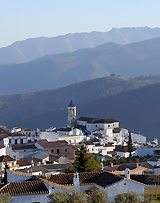
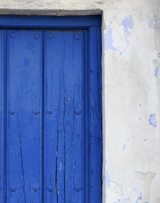
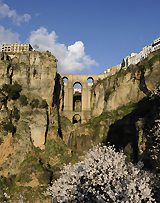
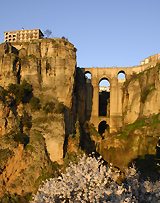

Sorry, the comment form is closed at this time.